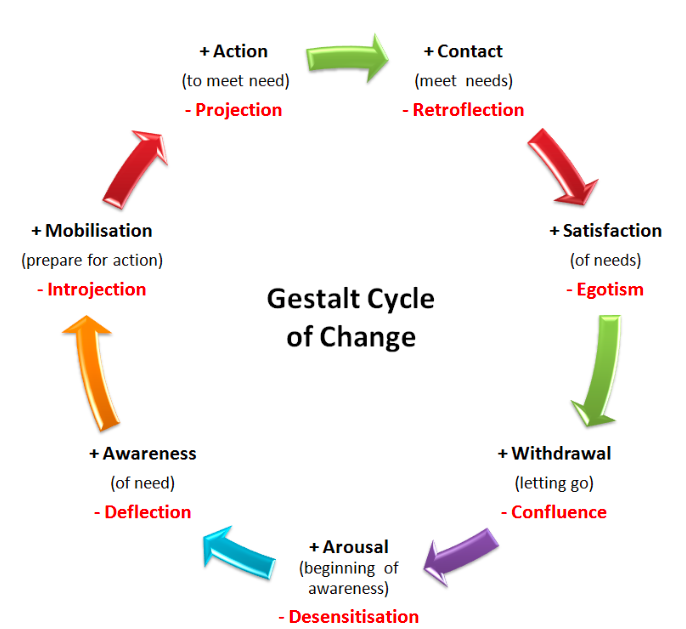Gestalt therapy for the development of Emotional Intelligence and leadership
Bringing self-awareness into leadership
This article focuses on showing how we can work on leadership from a Gestalt approach and thereby develop our emotional intelligence.
Gestalt therapy is a humanistic approach that comes from Gestalt psychology. This new approach to human psychology was conceived by Fritz Perls towards the end of the 1940’s and has its roots in the discovery of the unconscious in 20th-century psychoanalysis.
Gestalt therapy is founded on various sources, including oriental philosophy, psychodrama (as therapeutic theatre), the encounter groups of Carl Rogers, S. Friedlander’s theory of creative indifference, W. Reich’s bioenergetics, existential philosophy and directed dreaming.
Gestalt therapy views human existence from a holistic perspective and is concerned with integrating its different dimensions: sensory, emotional, intellectual, social and spiritual. This experience is felt in the body and translated into thoughts and words and vice versa, as words and thoughts are felt as bodily sensations.
Gestalt places special emphasis on awareness, integration and self-realisation, with the intention of fulfilling an individual’s highest potential. This highest potential is what we want to develop and actualise as leaders, particularly taking into account the emotional dimension.
Gestalt is a way of being in the world, a philosophy of life based on being in contact with the present moment. Its main focus is on becoming aware, and it therefore places a greater emphasis on processes than content, on the “how” than on the “why”. The focus is not on “what happens to us?”, but “what do we do with what happens to us?”. It’s an existential question about the position we take in our life circumstances that is based on honesty, self-esteem, responsibility and respect.
Neurosis in Gestalt
In Gestalt we understand the person as “an individual and a social being”, and can define human life as “the interaction between the person and his environment in a constantly changing field” (F. Perls). The person that can live in meaningful contact with his society, without being completely swallowed by it and without being completely withdrawn from it, is well-integrated and lives in a state of well-being.
The needs of an individual can be satisfied with adequate contact with their environment and withdrawal from it when necessary. Society also has a series of needs that require the participation of the individual. Every action that a person takes should have the aim of balancing their personal needs with the demands of society.
This balance is lost when the individual and their society (others) experience divergent needs and the individual is no longer able to fulfil their own needs.
When we cannot make a decision or feel dissatisfied with the decision we have made, we have not made sufficient contact with others or have failed to withdraw from others.
It is at this moment that we lose our sense of wellbeing as we are unable to find and maintain a proper balance between “others” and “ourselves”. The neurotic mechanisms are a defensive manoeuvre to protect ourselves from the threat of being crushed by external demands. These unconscious mechanisms appear to restore the lost balance in a situation where we cannot distinguish between our need and the needs of others, and our needs then remain unmet.
Through increased awareness we can try to right this inbalance and recover what was lost in the way, restoring a more fulfilling way of living, and fulfilling our potential.
The Gestalt cycle
As we have seen, neurotic mechanisms are closely related to meeting our needs. This relationship can be represented by the Gestalt cycle of experience, also called the cycle of satisfaction of needs.
As Michel Katzeff says, satisfying the needs of most people and groups tends to progress through a psycho-physiological and social cycle that goes on and ends in the same way.
This cycle is made up of 7 different stages. Between each stage there is a creative mechanism or pathological resistance due to neurotic mechanisms. Each state overcomes the stage that precedes it by integrating it.

Picture from: https://www.enduringmind.co.uk/mindfulness-cycle-of-change/
The seven stages are:
I. Arousal: The individual experiences an initial sensation, motivation, desire orneed that must be satisfied and that momentarily pushes others into the background. These sensations are messages from our bodies that can be difficult to rationalise.
(E.g. The need for recognition from others.)
II. Awareness: The awareness of this original sensation allows it to manifest itself with greater clarity. Here, the function of the conscience is to help the organism to orient itself and to act towards the satisfaction of this sensation: to understand what is happening, what the sensation relates to, and what is the need or desire that it is behind it.
(E.g. The realisation of this need.)
III. Mobilisation: Awareness involves a psycho-physiological activation that mobilises the vital energy of the organism and impels it to act and satisfy the need.
(E.g. Activation in the body to get this recognition.)
IV. Action: This is about making an effort to want, to prepare, to have the will to deploy towards the source that has been chosen to respond to the need.
(E.g. Taking steps to make this recognition happen.)
V Contact: The displacement towards the desired object leads to contact: the encounter, the essay, the hesitation, the approach, the prelude. Contact is to allow a certain creative tension, the flow of the current from “me to you”. It is about being ONE with others. It is union with others, the meeting of differences.
(E.g. You start to put yourself in someone else’s situation.)
VI. Satisfaction: This is about completing the process. It is the fusion, the point at which we are no longer in contact with ourselves and are dissolved into the other. We are absorbed, we become confluent and undifferentiated.
(E.g. You get recognition from others.)
VII. Withdrawal: This is the process of retreating back to ourselves once the need has been met. The undifferentiated “I-You” again becomes the personalised self. This last phase of the cycle allows us to enjoy and rest from the effort exerted, as well as to be ready for the appearance of a new sensation, prompting the process to start over again.
(E.g. You stop needing this recognition for the moment.)
We can use this cycle to increase the awareness of leaders. It is a helpful roadmap that can highlight possible interferences in the flow of this cycle and help leaders to gain a full realisation of themselves.
As we mentioned above, between each of these phases there are different resistances or interruptions. These result in unfinished situations that remain internalised until they can be brought back to the surface of consciousness to be satisfied. These resistances are the neurotic mechanisms that we will now look at in depth.
The creative reconversion of neurotic mechanisms
Neurotic mechanisms do not only act as defences, resistances or inadequate forms of contact and withdrawal. They have a CREATIVE side that allows them to decriminalise the neurotic and rescue its artistic or sublimated aspect, releasing the repressed potential of the person (Peñarubia).This aim corresponds directly to leadership and is of greater interest to us than the therapeutic application.
Each of the neurotic mechanisms can be used in a creative way to search for authenticity. When we are aware that we are using a specific mechanism, we have a very powerful and useful tool, not only for better interactions with our environment, but also for the performance of our work in any field.
The 4 main neurotic mechanisms
Projection
The projection is the tendency we have to make the others responsible for aspects that originated inside of us. By projecting what’s inside onto the outside, we become passive objects and victims of our circumstances.
In this projection, we renounce those aspects of our personality that we find difficult, offensive or unattractive to accept, projecting them outside of ourselves and onto others. This prevents us from becoming aware of uncomfortable sensations.
Projection is a very important tool in personal development. When we start to take responsibility for what is ours rather than projecting it onto others, we remove barriers and are freed to be more empathic towards others; a trip that allows a leader to put himself in the place of the other person, understand and accompany others in their path, taking the best out from them.
Introjection
This is a mechanism that incorporates patterns, attitudes, ways of acting and thinking from others that are not truly ours. We do it by swallowing them without discrimination, so that we cannot keep the part that’s beneficial, and return what does not serve us. These foreign ideas that are not assimilated, also known as introjections, impede the development and expression of one’s own being.
In the cycle of satisfaction, introjections are situated between “awareness and mobilisation”. We receive a message from our environment that negatively judges an inner need that we are no longer aware of, thereby preventing us from satisfying it.
From a positive angle, introjections help us to creatively review our roots and origins, to recover the past to make it our own, to reexamine traditional wisdom and go beyond our usual judgements and limits. We can begin to identify useful resources from past learning experiences, maintaining the constructive traditional values that have helped to shape our identity.
Confluence
This is when we feel there’s no separation between ourselves and our environment or others around us, meaning that we are in confluence with them. This has a lot to do with not being aware of the differences between others and ourselves.
In the cycle of satisfaction, confluence implies staying stuck in an experience without being able to separate oneself from it. The cycle is therefore interrupted between “realisation and withdrawal”. We remain in the state of undifferentiated fusion, not giving space for celebration and rest or allowing new needs to emerge.
Confluence can also be used creatively to give ourselves a sense of being part of something bigger, of knowing that we belong to a larger collective. If I lose my limits in a group, confluence makes me bigger and helps me experience a feeling of uniqueness and greater transcendence than I would have done as an individual. This creative approach helps us to attain a level of transcendence, trust, and the ability to abandon ourselves to collective wisdom.
Retroflection
This literally means “going back intensely against ourselves”. It is when we treat ourselves in a way that we wanted to treat others, but stopped ourselves from doing because of the negative consequences. For example, instead of becoming angry with those around us, we direct this anger against ourselves. We thereby change the direction of our emotions and run the risk of becoming our own worst enemy if we fail to correctly channel this energy.
In the Gestalt cycle, retroflection prevents us from taking action, meaning that mobilisation cannot take palce and energy becomes an inward-looking psychological or physiological force.
The creative management of retroflection requires the development of obedience and discipline. We first need to strengthen our will power, develop inner strength, and learn to hear and obey our inner voice. It is about being aware of what we are doing to ourselves, of controlling our impulses and resisting destructive impulses. It is about maintaining attention and neutrally observing the world with detached emotions (not repressed emotions), whilst persevering with the task at hand.
Becoming aware of the cycle of satisfaction and the mechanisms that interfere with its completion is useful for leaders as they grow in awareness of their unconscious mechanisms, overcoming resistance and becoming able to unfold their inner potential, making it available for themselves and for others.
Bibliography
- F. Perls (1957) “Gestalt Therapy: Exciting and Growth in the Human Personality”. Ed: Paul Goodman
- Peñarrubia, Francisco (2006): Terapia Gestalt. La vía del vacío fértil; Alianza Editorial
- Segado, Águeda. (2006) Los mecanismos neuróticos en Gestalt y los mecanismos de defensa en Psicoanálisis. Aportación a un análisis comparativo.
- Polster, Erving y Miriam (2003). Terapia guestáltica. Argentina: Editorial Amorrortu.
Laura Lopez Gámez
 I am a psychologist with great experience as trainer in Humanistic approaches; on Body movement and Corporal Expression (Río Abierto), Vital Readjustment facilitator, MBSR in Mindfulness and Gestalt therapy. I work mainly in the areas of Conflict Resolution, Emotional Intelligence, and Leadership with holistic practices that bring self-alignment.
I am a psychologist with great experience as trainer in Humanistic approaches; on Body movement and Corporal Expression (Río Abierto), Vital Readjustment facilitator, MBSR in Mindfulness and Gestalt therapy. I work mainly in the areas of Conflict Resolution, Emotional Intelligence, and Leadership with holistic practices that bring self-alignment.


